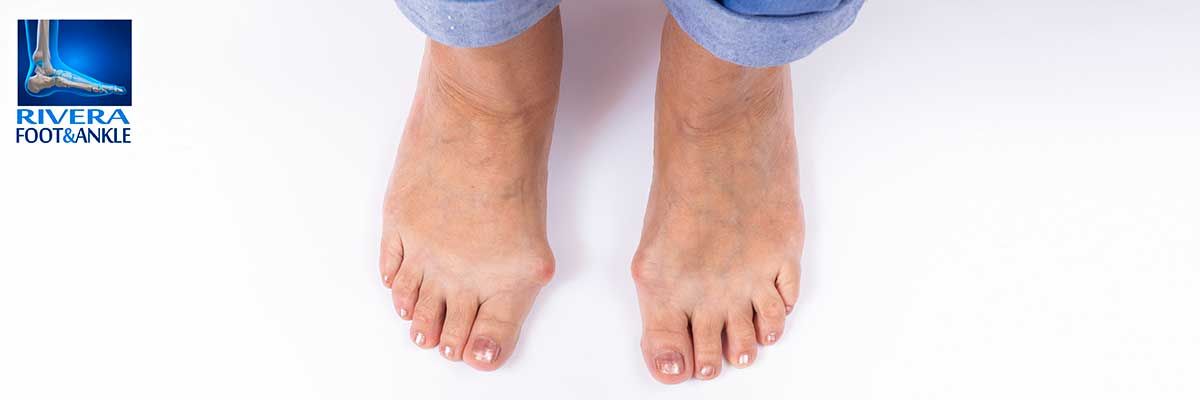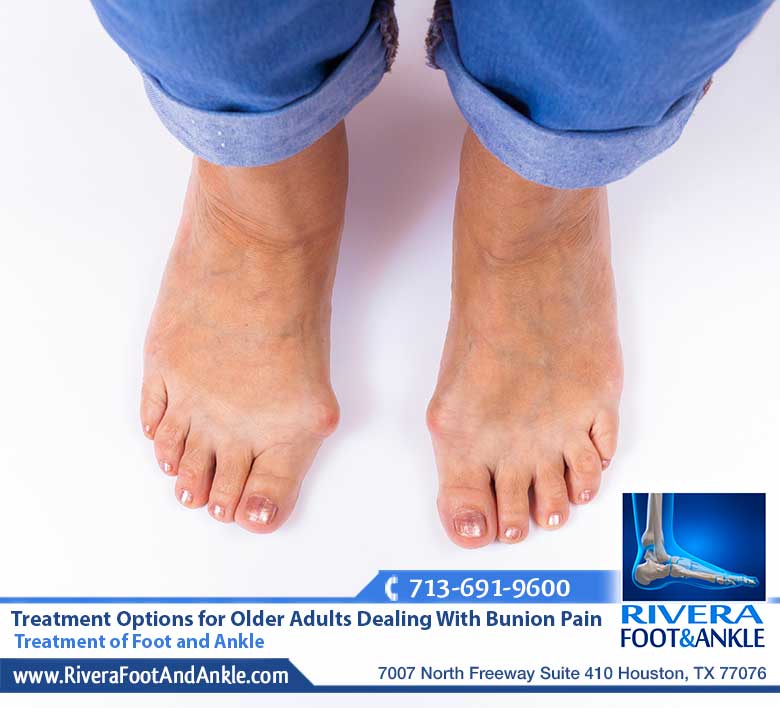
Treatment of Foot and Ankle
Treatment Options for Older Adults Dealing With Bunion Pain
You might feel that as you get older you develop new and different aches and pains every day. Throughout your life, you’ve stood on your feet, walked, and ran and they’ve supported your whole body every day.
This continued pressure and stress can cause painful foot conditions, like bunions to develop. You might think that bunion pain is just a side effect of getting older, but there are many treatments you can try at home to relieve foot pain. And if at-home care doesn’t relieve your bunion pain, you can always make an appointment with your trusted podiatrist to diagnose the cause of your foot pain and provide customized treatments to relieve your discomfort, heal your bunion, and restore functionality of your foot.
What are Bunions and What Causes Them?
Bunions are deformities that develop on the joint where your big toe meets your foot. Medically, this joint is called the hallux metatarsophalangeal (MTP) joint. Misalignment or tight muscles or tendons in your foot put pressure on the joint, causing your big toe to lean toward your other toes. This pushes the metatarsal bone in your foot toward the outside of your foot, creating a misalignment in your MTP joint.
The misalignment and pressure from your shoes cause a bony lump to form on the outside of the joint. This lump gets bigger as time goes by and can make the misalignment of your toe more pronounced.
What are Bunions Symptoms?
Initially, bunions may not cause any symptoms. The first sign you might notice that you develop a callus on the side of your foot at the MTP joint. You may also notice the hump on the side of your foot and that your skin becomes red and inflamed. Eventually, you’ll find that your feet start to hurt and that your bunion may affect your gait, which is the way your foot moves when you walk. Bunion pain can become severe enough pain that it impedes your mobility.
What Can You Do at Home to Relieve Foot Pain from Bunions?
If you notice that you’re developing a bunion, there are some steps you can take at home to relieve your discomfort and slow its development.
Change your shoes
If you’ve been wearing shoes that are too narrow in the toe box or that put too much pressure on your toes and the balls of your feet, it can make your bunions more painful and exacerbate your discomfort. Change your shoes to flat, supportive shoes with plenty of room in the toe box.
Lose weight
If you’re overweight, you’re putting extra pressure on your feet which can contribute to your discomfort, especially when you have a bunion. If you can lose weight it reduces the stress on your already misaligned feet and toes.
Over-the-counter treatments
Over-the-counter nonsteroidal drugs like ibuprofen can reduce inflammation and swelling, which relieves your pain. You can also try bunion cushions to protect your bunion and reduce friction when you’re wearing shoes.
Warm and cold treatments
Warm foot baths with Epsom salts can relieve muscle aches and tension, if your bunion is sore after a long day on your feet. You can also apply an ice pack to reduce any swelling.
When to See a Doctor About Bunion Pain
If your attempts to ease your foot pain at home aren’t successful and your foot pain is getting worse, you should make an appointment with your trusted podiatrist.
How Does a Podiatrist Treat Bunions?
Physical therapy
Physical therapy can release any tight muscles or tendons in your foot or ankles that are pulling your metatarsal bones out of alignment. Physical therapy for bunions involves stretching maneuvering your foot to correct misalignments and tightness.
Splints
A splint is often used to hold your toe and MTP joint in the correct alignment. Over time, your muscles and tendons relax and adjust to your foot being in the correct alignment. You may also benefit from physical therapy while you wear the splint to aid the correction.
Orthotics
Custom orthotics which are made to fit and support your feet in a precise way to relieve pressure on your bunion and encourage correct alignment and gait.
Surgery
When other treatments for bunions are unsuccessf.
RIVERA FOOT & ANKLE: At Orlando H.Rivera DPM, our priority is to deliver quality care to informed patients in a comfortable and convenient setting. When you have problems with your feet, you need to turn to a podiatrist who listens and responds… an experienced doctor who knows the field and can effectively diagnose and treat your needs… a friendly physician who counsels you on the best ways to maintain and improve your health. Our physician(s) meet all these criteria. Plus, you benefit from a dedicated team of trained professionals who give you the individualized attention you deserve.

Treatment of Foot and Ankle
Foot and Ankle, Dr. Orlando Rivera, Advanced Foot & Ankle Specialist, Foot and Ankle Podiatry, Houston Foot & Ankle Surgical, Treatment of Foot and Ankle, Foot & ankle specialists, Podiatrist in houston, podiatrist in houston, Orlando H.Rivera DPM, Houston Foot Doctor, Foot and Ankle Surgeon Houston, Ankle and Foot Specialist Houston, Podiatrist Houston, Foot Pain Houston.



